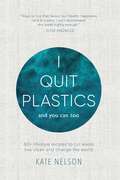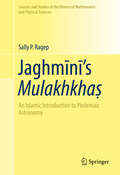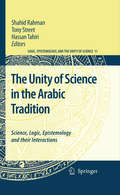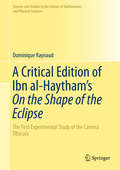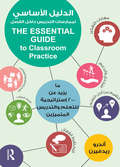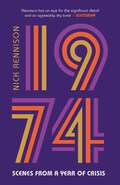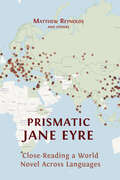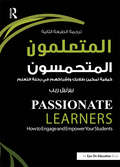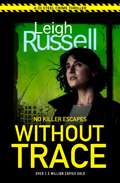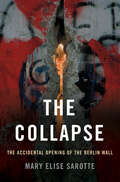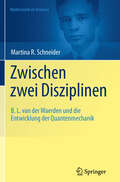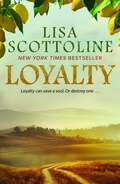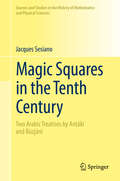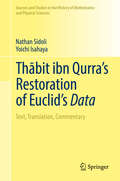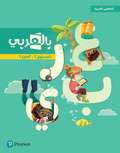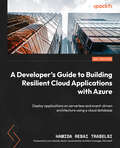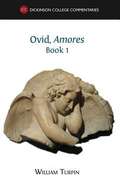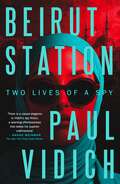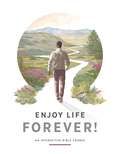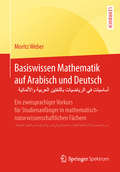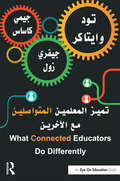- Table View
- List View
I Quit Plastics, And You Can Too: 60+ lifestyle recipes to cut waste, live clean and change the world
by Pantera PressJaghmīnī’s Mulakhkhaṣ: An Islamic Introduction to Ptolemaic Astronomy (Sources and Studies in the History of Mathematics and Physical Sciences)
by Sally P. RagepThis book provides the only critical edition and English translation of Maḥmūd al-Jaghmīnī’s al-Mulakhkhaṣ fī al-hayʾa al-basīṭa, the most widely circulated Arabic treatise on Ptolemaic astronomy ever written. Composed in the early 13th century, this introductory textbook played a crucial role in the teaching, dissemination, and institutional instruction of Islamic astronomy well into the 19th century (and beyond). Establishing the base text is a fundamental prerequisite for gaining insights into what was considered an elementary astronomical textbook in Islam and also for understanding the extensive commentary tradition that built upon it. Within this volume, the Mulakhkhaṣ is situated within the broader context of the genre of literature termed ʿilm al-hayʾa, which has become the subject of intensive research over the past 25 years. In so doing, it provides a survey of summary accounts of theoretical astronomy of Jaghmīnī’s predecessors, both Ancient and Islamic, which could have served as potential sources for the Mulakhkhaṣ. Jaghmīnī’s dates (which until now remained unsettled) are established, and it is definitively shown that he composed not only the Mulakhkhaṣ but also other scientific treatises, including the popular medical treatise al-Qānūnča, during a period that has been deemed one of scientific decline and stagnation in Islamic lands. The book will be of particular interest to scholars engaged in the study of Islamic theoretical astronomy, but is accessible to a general readership interested in learning what constituted an introduction to Ptolemaic astronomy in Islamic lands.
The Unity of Science in the Arabic Tradition: Science, Logic, Epistemology and their Interactions (Logic, Epistemology, and the Unity of Science #11)
by Shahid Rahman Tony Street Hassan Tahirithe demise of the logical positivism programme. The answers given to these qu- tions have deepened the already existing gap between philosophy and the history and practice of science. While the positivists argued for a spontaneous, steady and continuous growth of scientific knowledge the post-positivists make a strong case for a fundamental discontinuity in the development of science which can only be explained by extrascientific factors. The political, social and cultural environment, the argument goes on, determine both the questions and the terms in which they should be answered. Accordingly, the sociological and historical interpretation - volves in fact two kinds of discontinuity which are closely related: the discontinuity of science as such and the discontinuity of the more inclusive political and social context of its development. More precisely it explains the discontinuity of the former by the discontinuity of the latter subordinating in effect the history of science to the wider political and social history. The underlying idea is that each historical and - cial context generates scientific and philosophical questions of its own. From this point of view the question surrounding the nature of knowledge and its development are entirely new topics typical of the twentieth-century social context reflecting both the level and the scale of the development of science.
A Critical Edition of Ibn al-Haytham’s On the Shape of the Eclipse: The First Experimental Study of the Camera Obscura (Sources and Studies in the History of Mathematics and Physical Sciences)
by Dominique RaynaudThis book provides the first critical edition of Ibn al-Haytham’s On the Shape of the Eclipse with English translation and commentary, which records the first scientific analysis of the camera obscura. On the Shape of the Eclipse includes pioneering research on the conditions of formation of the image, in a time deemed to be committed to aniconism. It also provides an early attempt to merge the two branches of Ancient optics—the theory of light and theory of vision. What perhaps most strongly characterizes this treatise is the close interaction of a geometric analysis of light and experimental reasoning. Ibn al-Haytham conducted his experiments in a systematic way by varying all that could be changed: the shape and size of the aperture, the focal length of the camera obscura, the distance and shape of the celestial bodies. This way, he achieved a thorough understanding. This work represents a decisive step in both the history of optics and the application of the experimental method that was just as efficient in medieval Islam as today.
The Essential Guide to Classroom Practice: 200+ strategies for outstanding teaching and learning, Arabic Edition
by Andrew RedfernThe Essential Guide to Classroom Practice has been written with two questions in mind. These are the questions that are most important to all practitioners who seek to improve the quality of learning in their classrooms – what strategies work? and, how do we implement them? Covering all the areas that are key to effective teaching and learning, this text consists of over 200 practical strategies that secondary teachers can adopt and apply within their classroom. These strategies range from simple tools to improve the quality of questioning, to principles that can shape the whole approach to learning. Key topics covered include: The five-part lesson plan Developing thinking skills How to engage learners Encouraging collaborative learning Challenging and supporting Feedback and assessment A key feature of this book is the handy collection of ‘Top 10s’ that appear in each chapter, such as 10 ways to use data in the classroom and 10 ways to streamline your marking. The book clearly explains the benefit of each approach described and offers additional guidance on using websites and digital tools effectively in the classroom. Packed full of ideas, the book offers a one stop shop for busy teachers.
Prismatic Jane Eyre: Close-Reading a World Novel Across Languages
by Matthew Reynolds OthersJane Eyre, written by Charlotte Brontë and first published in 1847, has been translated more than five hundred times into over sixty languages. Prismatic Jane Eyre argues that we should see these many re-writings, not as simple replications of the novel, but as a release of its multiple interpretative possibilities: in other words, as a prism. Prismatic Jane Eyre develops the theoretical ramifications of this idea, and reads Brontë’s novel in the light of them: together, the English text and the many translations form one vast entity, a multilingual world-work, spanning many times and places, from Cuba in 1850 to 21st-century China; from Calcutta to Bologna, Argentina to Iran. Co-written by many scholars, Prismatic Jane Eyre traces the receptions of the novel across cultures, showing why, when and where it has been translated (and no less significantly, not translated – as in Swahili), and exploring its global publishing history with digital maps and carousels of cover images. Above all, the co-authors read the translations and the English text closely, and together, showing in detail how the novel’s feminist power, its political complexities and its romantic appeal play out differently in different contexts and in the varied styles and idioms of individual translators. Tracking key words such as ‘passion’ and ‘plain’ across many languages via interactive visualisations and comparative analysis, Prismatic Jane Eyre opens a wholly new perspective on Brontë’s novel, and provides a model for the collaborative close-reading of world literature. Prismatic Jane Eyre is a major intervention in translation and reception studies and world and comparative literature. It will also interest scholars of English literature, and readers of the Brontës.
Prismatic Jane Eyre: Close-Reading a World Novel Across Languages
by Matthew Reynolds OthersJane Eyre, written by Charlotte Brontë and first published in 1847, has been translated more than five hundred times into over sixty languages. Prismatic Jane Eyre argues that we should see these many re-writings, not as simple replications of the novel, but as a release of its multiple interpretative possibilities: in other words, as a prism. Prismatic Jane Eyre develops the theoretical ramifications of this idea, and reads Brontë’s novel in the light of them: together, the English text and the many translations form one vast entity, a multilingual world-work, spanning many times and places, from Cuba in 1850 to 21st-century China; from Calcutta to Bologna, Argentina to Iran. Co-written by many scholars, Prismatic Jane Eyre traces the receptions of the novel across cultures, showing why, when and where it has been translated (and no less significantly, not translated – as in Swahili), and exploring its global publishing history with digital maps and carousels of cover images. Above all, the co-authors read the translations and the English text closely, and together, showing in detail how the novel’s feminist power, its political complexities and its romantic appeal play out differently in different contexts and in the varied styles and idioms of individual translators. Tracking key words such as ‘passion’ and ‘plain’ across many languages via interactive visualisations and comparative analysis, Prismatic Jane Eyre opens a wholly new perspective on Brontë’s novel, and provides a model for the collaborative close-reading of world literature. Prismatic Jane Eyre is a major intervention in translation and reception studies and world and comparative literature. It will also interest scholars of English literature, and readers of the Brontës.
Passionate Learners: How to Engage and Empower Your Students, Arabic Edition
by Pernille RippWould you want to be a student in your own classroom? In Passionate Learners: How to Engage and Empower Your Students, author Pernille Ripp challenges both novice and seasoned teachers to create a positive, interactive learning environment where students drive their own academic achievement. You’ll discover how to make fundamental changes to your classroom so learning becomes an exciting challenge rather than a frustrating ordeal. Based on the author’s personal experience of transforming her approach to teaching, this book outlines how to: • Build a working relationship with your students based on mutual trust, respect, and appreciation. • Be attentive to your students’ needs and share ownership of the classroom with them. • Break out of the vicious cycle of punishment and reward to control student behaviour. • Use innovative and creative lesson plans to get your students to become more engaged and intellectually-invested learners, while still meeting your state standards. • Limit homework and abandon traditional grading so that your students can make the most of their learning experiences without unnecessary stress. • And much more! New to the second edition, you’ll find practical tools, such as teacher and student reflection sheets, parent questionnaires, and parent conference tools--available in the book and as eResources on our website (http://www.routledge.com/9781138916920)—to help you build your own classroom of passionate learners.
Without Trace: An Utterly Gripping Detective Crime Thriller With An Unexpected Twist (Di Geraldine Steel Ser. #20)
by Leigh RussellThe Collapse: The Accidental Opening Of The Berlin Wall
by Mary Elise SarotteOn the night of November 9, 1989, massive crowds surged toward the Berlin Wall, drawn by an announcement that caught the world by surprise: East Germans could now move freely to the West. The Wall,infamous symbol of divided Cold War Europe,seemed to be falling. But the opening of the gates that night was not planned by the East German ruling regime,nor was it the result of a bargain between either Ronald Reagan or George H.W. Bush and Soviet leader Mikhail Gorbachev.It was an accident.In The Collapse , Prize-winning historian Mary Elise Sarotte reveals how a perfect storm of decisions made by daring underground revolutionaries, disgruntled Stasi officers, and dictatorial party bosses sparked an unexpected series of events culminating in the chaotic fall of the Wall. With a novelist's eye for character and detail, she brings to vivid life a story that sweeps across Budapest, Prague, Dresden, and Leipzig and up to the armed checkpoints in Berlin.We meet the revolutionaries Roland Jahn, Aram Radomski, and Siggi Schefke, risking it all to smuggle the truth across the Iron Curtain the hapless Politburo member Günter Schabowski, mistakenly suggesting that the Wall is open to a press conference full of foreign journalists, including NBC's Tom Brokaw and Stasi officer Harald Jäger, holding the fort at the crucial border crossing that night. Soon, Brokaw starts broadcasting live from Berlin's Brandenburg Gate, where the crowds are exulting in the euphoria of newfound freedom,and the dictators are plotting to restore control.Drawing on new archival sources and dozens of interviews, The Collapse offers the definitive account of the night that brought down the Berlin Wall.
Zwischen zwei Disziplinen: B. L. van der Waerden und die Entwicklung der Quantenmechanik (Mathematik im Kontext)
by Martina SchneiderIm Mittelpunkt des Buchs steht ein bisher weitgehend unerforschtes Arbeitsgebiet des niederländischen Mathematikers van der Waerden: seine Beiträge zur gruppentheoretischen Methode in der Quantenmechanik um 1930. Entstehungsgeschichte, Inhalt und Wirkung werden von der Autorin detailliert herausgearbeitet und die damalige Kontroverse um den Nutzen der gruppentheoretischen Methode erörtert. Dadurch legt sie nicht nur die Vielschichtigkeit von Mathematisierungsprozessen offen, sondern auch ihre Rückwirkung auf Entwicklungen in der „reinen“ Mathematik.
Magic Squares in the Tenth Century: Two Arabic Treatises by Anṭākī and Būzjānī (Sources and Studies in the History of Mathematics and Physical Sciences)
by Jacques SesianoThis volume contains the texts and translations of two Arabic treatises on magic squares, which are undoubtedly the most important testimonies on the early history of that science. It is divided into the three parts: the first and most extensive is on tenth-century construction methods, the second is the translations of the texts, and the third contains the original Arabic texts, which date back to the tenth century.
L’idée de l’Europe au Siècle des Lumières
by Rotraud Von Kulessa Et Catriona SethFace aux défis – entre autres politiques – auxquels sont confrontés différents pays européens, les chercheurs dix-huitiémistes ont souhaité revenir sur des expressions anciennes de valeurs partagées et les interrogations passées sur des questions qui restent souvent d’actualité. Au Siècle des Lumières, nombre d’hommes et de femmes de lettres ont envisagé l’avenir du continent en particulier pour entériner leur souhait de garantir la paix en Europe. Les textes, réunis dans cette anthologie, et signés des grands écrivains du temps (Rousseau, Montesquieu, Voltaire, Kant, Hume ou encore Staël), comme d’oubliés de l’histoire, présentent, avec quelques excursus chronologiques (de Sully à Hugo) les réflexions de penseurs d’un dix-huitième siècle aux bornes chronologiques étendues – l’émergence et la chute de l’Empire engendrent des bouleversements nombreux –, sur l’Europe, son histoire, sa diversité, mais aussi sur ce qu’ont en commun les nations qui composent, dans leur variété, un ensemble géographique. Ils mettent en évidence les origines historiques d’un projet d’union européenne, le souhait de consolider les liens du continent avec le Maghreb ou la Turquie, l’importance accordée au commerce et les inquiétudes suscitées par les sursauts de l’histoire, mais aussi l’espoir placé dans les générations futures. La Société française d’étude du XVIIIe siècle, l’Université d’Augsburg, l’Université d’Oxford ont généreusement contribué à la publication de ce volume. In view of the challenges—many of which are political—that different European countries are currently facing, scholars who work on the 18th century have compiled this anthology which includes earlier recognitions of common values and past considerations of questions which often remain pertinent nowadays. During the Enlightenment, many men and women of letters envisaged the continent’s future in particular when stressing their hope that peace could be secured in Europe. The texts gathered here, and signed by major thinkers of the time (Rousseau, Montesquieu, Voltaire, Kant, Hume or Staël for instance), as well as by writers history has forgotten, present the reflections, with a couple of chronological extensions (from Sully to Victor Hugo) of authors from the long eighteenth century—the French Empire and the fall of Napoleon generated numerous upheavals—on Europe, its history, its diversity, but also on what the nations, which, in all their diversity, make up a geographical unit, have in common. They show the historical origins of the project of a European union, the desire to consolidate the continent’s ties to the Maghreb or to Turkey, the importance granted to commerce and the worries engendered by history’s convulsions, but also the hope vested in future generations. The Société française d’étude du XVIIIe siècle, Augsburg University and the University of Oxford have generously contributed towards the publication of this volume.
Thābit ibn Qurra’s Restoration of Euclid’s Data: Text, Translation, Commentary (Sources and Studies in the History of Mathematics and Physical Sciences)
by Nathan Sidoli Yoichi IsahayaThis book provides a critical edition, translation, and study of the version of Euclid’s treatise made by Thābit ibn Qurra, which is the earliest Arabic version that we have in its entirety. This monograph study examines the conceptual differences between the Greek and Arabic versions of the treatise, beginning with a discussion of the concept of "given" as it was developed by Greek mathematicians. This is followed by a short account of the various medieval versions of the text and a discussion of the manuscripts used in this volume. Finally, the Arabic text and an English translation are provided, followed by a critical commentary.
Bilarabi for Native Speakers Student Book Grade 1 Vol 1
by Hanada TahabilArabi for Native Speakers is part of the broader bilArabi series. It is an inquiry-based, Arabic language learning program for Schools.
A Developer's Guide to Building Resilient Cloud Applications with Azure: Deploy Applications On Serverless And Event-driven Architecture Using A Cloud Database
by Hamida Rebai TrabelsiDeploy applications on serverless and event-driven architecture using a cloud database
Ovid, Amores (Book 1)
by William TurpinFrom Catullus to Horace, the tradition of Latin erotic poetry produced works of literature which are still read throughout the world. Ovid’s Amores, written in the first century BC, is arguably the best-known and most popular collection in this tradition. Born in 43 BC, Ovid was educated in Rome in preparation for a career in public services before finding his calling as a poet. He may have begun writing his Amores as early as 25 BC. Although influenced by poets such as Catullus, Ovid demonstrates a much greater awareness of the funny side of love than any of his predecessors. The Amores is a collection of romantic poems centered on the poet’s own complicated love life: he is involved with a woman, Corinna, who is sometimes unobtainable, sometimes compliant, and often difficult and domineering. Whether as a literary trope, or perhaps merely as a human response to the problems of love in the real world, the principal focus of these poems is the poet himself, and his failures, foolishness, and delusions. By the time he was in his forties, Ovid was Rome’s most important living poet; his Metamorphoses, a kaleidoscopic epic poem about love and hatred among the gods and mortals, is one of the most admired and influential books of all time. In AD 8, Ovid was exiled by Augustus to Romania, for reasons that remain obscure. He died there in AD 17. The Amores were originally published in five books, but reissued around 1 AD in their current three-book form. This edition of the first book of the collection contains the complete Latin text of Book 1, along with commentary, notes and full vocabulary. Both entertaining and thought-provoking, this book will provide an invaluable aid to students of Latin and general readers alike. This book contain embedded audio files of the original text read aloud by Aleksandra Szypowska.
Enjoy Life Forever!-an Interactive Bible Course
by Watchtower Bible and Tract Society of New Yorkكيف سنُؤمِّن لقمة عيشنا أو كيف تكون عائلتنا سعيدة. لقد وجد كثيرون أن الكتاب المقدس يجيبهم عن الأسئلة المهمة في الحياة. وأكثر من ذلك، وجدوا فيه نصائح تفيدهم في حياتهم اليومية. يعطينا الكتاب المقدس نصائح تفيدنا. مثلًا، يعلِّم العائلات كيف تعيش بسعادة. ونصائحه تساعدنا أن نتحمَّل ضغوط الحياة ونفرح في عملنا. ستتعلم ماذا يقول الكتاب المقدس عن هذه المواضيع ومواضيع غيرها. ونتمنى أن تقول في النهاية: «كل الأسفار المقدسة [ Nearly all of us have questions about life, suffering, death, and the future. We are also concerned about day-to-day matters, such as making a living or having a happy family. Many people find that the Bible not only helps them answer life’s big questions but also gives them practical advice for daily living. For example, it teaches families how to be truly happy. It offers advice on how to deal with stress and how to enjoy our work. You will learn what the Bible teaches about these topics and much more. You may come to agree that “all Scripture [everything in the Bible] is . . . beneficial.”—2 Timothy 3:16.
Enjoy Life Forever!-an Interactive Bible Course
by Watchtower Bible and Tract Society of New Yorkكيف سنُؤمِّن لقمة عيشنا أو كيف تكون عائلتنا سعيدة. لقد وجد كثيرون أن الكتاب المقدس يجيبهم عن الأسئلة المهمة في الحياة. وأكثر من ذلك، وجدوا فيه نصائح تفيدهم في حياتهم اليومية. يعطينا الكتاب المقدس نصائح تفيدنا. مثلًا، يعلِّم العائلات كيف تعيش بسعادة. ونصائحه تساعدنا أن نتحمَّل ضغوط الحياة ونفرح في عملنا. ستتعلم ماذا يقول الكتاب المقدس عن هذه المواضيع ومواضيع غيرها. ونتمنى أن تقول في النهاية: «كل الأسفار المقدسة [ Nearly all of us have questions about life, suffering, death, and the future. We are also concerned about day-to-day matters, such as making a living or having a happy family. Many people find that the Bible not only helps them answer life’s big questions but also gives them practical advice for daily living. For example, it teaches families how to be truly happy. It offers advice on how to deal with stress and how to enjoy our work. You will learn what the Bible teaches about these topics and much more. You may come to agree that “all Scripture [everything in the Bible] is . . . beneficial.”—2 Timothy 3:16.
Basiswissen Mathematik auf Arabisch und Deutsch - أساسيات في الرياضيات باللغتين العربية والألمانية: Ein zweisprachiger Vorkurs für Studienanfänger in mathematisch-naturwissenschaftlichen Fächern - دورة تحضيرية ثنائية اللغة للطلاب المستجدّين في فروع الرياضيات والعلوم الطبيعية
by Moritz WeberDieses Lehrbuch ist speziell für angehende Studierende mit arabischem Sprachhintergrund verfasst, die ein Studium im deutschen Sprachraum aufnehmen wollen. Um ihnen sowohl den sprachlichen als auch den fachlichen Einstieg zu erleichtern, ist die Gestaltung zweisprachig. Dies ermöglicht sowohl das Anknüpfen an bekannte Inhalte in der Muttersprache als auch das Erlernen der deutschen Begriffe. Inhaltlich frischt das Buch sehr konzentriert und konkret das nötigste mathematische Abiturwissen auf, das in Studiengängen wie Mathematik, Informatik, Natur- und Ingenieurwissenschaften vorausgesetzt wird. Das Buch ist grob in Analysis und Algebra gegliedert und beinhaltet möglichst wenige formale Definitionen, dafür aber viele anschauliche Beispiele und Verfahren sowie Beispielaufgaben.هذا الكتاب موجّه بشكل خاص للطلاب المبتدئين ذوي الخلفية العربية الذين يرغبون في الدراسة في البلدان الناطقة بالألمانية، ويهدف هذا التصميم ثنائي اللغة إلى تسهيل الجانبين اللغوي والاختصاصي على حدّ سواء، مما يتيح ربط بعض هذه المحتويات المألوفة باللغة الأم بالإضافة إلى تعلم المصطلحات الألمانية. من حيث المحتوى يركّز هذا الكتاب على التذكير بأهم المعارف الرياضية لمنهاج الثانوية العامة والمطلوبة لدراسة فروع مثل الرياضيات والمعلوماتية والهندسة والعلوم الطبيعية، كما ينقسم هذا الكتاب بشكل رئيسي إلى التحليل والجبر ويحتوي على أقل عدد ممكن من التعاريف إلا أنه يتضمن العديد من الأمثلة التوضيحية والتمارين النموذجية.
The Jewish Unions in America: Pages Of History And Memories
by Bernard Weinstein Maurice WolfthalNewly arrived in New York in 1882 from Tsarist Russia, the sixteen-year-old Bernard Weinstein discovered an America in which unionism, socialism, and anarchism were very much in the air. He found a home in the tenements of New York and for the next fifty years he devoted his life to the struggles of fellow Jewish workers. The Jewish Unions in America blends memoir and history to chronicle this time. It describes how Weinstein led countless strikes, held the unions together in the face of retaliation from the bosses, investigated sweatshops and factories with the aid of reformers, and faced down schisms by various factions, including Anarchists and Communists. He co-founded the United Hebrew Trades and wrote speeches, articles and books advancing the cause of the labor movement. From the pages of this book emerges a vivid picture of workers’ organizations at the beginning of the twentieth century and a capitalist system that bred exploitation, poverty, and inequality. Although workers’ rights have made great progress in the decades since, Weinstein’s descriptions of workers with jobs pitted against those without, and American workers against workers abroad, still carry echoes today. The Jewish Unions in America is a testament to the struggles of working people a hundred years ago. But it is also a reminder that workers must still battle to live decent lives in the free market. For the first time, Maurice Wolfthal’s readable translation makes Weinstein’s Yiddish text available to English readers. It is essential reading for students and scholars of labor history, Jewish history, and the history of American immigration.
What Connected Educators Do Differently: Arabic Edition
by Todd Whitaker Jeffrey Zoul Jimmy CasasTodd Whitaker, Jeffrey Zoul, and Jimmy Casas are widely acclaimed experts on teaching and leading and are pioneers in the education twitterverse, and now they are sharing their best practices! In What Connected Educators Do Differently, they show how being a connected educator—by using social media to connect with peers across the country and even across the globe—will greatly enhance your own learning and your success in a school or classroom. You’ll find out how to create a personal and professional learning network to share resources and ideas, gain support, and make an impact on others. By customizing your professional development in this way, you’ll be able to learn what you want, how you want, when you want. Best of all, you’ll become energized and inspired by all the great ideas out there and how you can contribute, benefiting both you and your students. Whether you are a teacher or school leader, you will come away from this book with step-by-step advice and fresh ideas to try immediately. Being a connected educator has never been easier or more important than it is right now!
